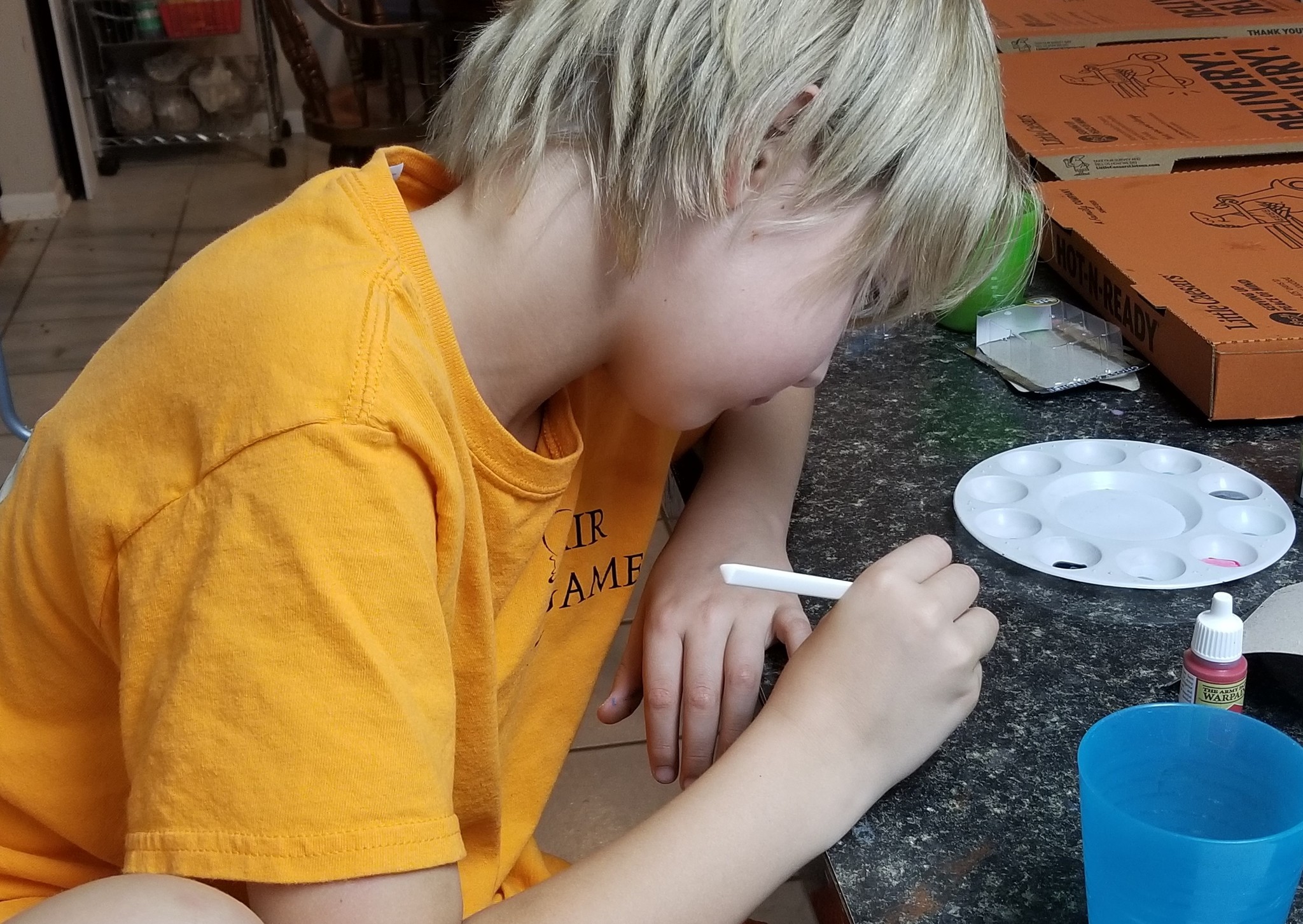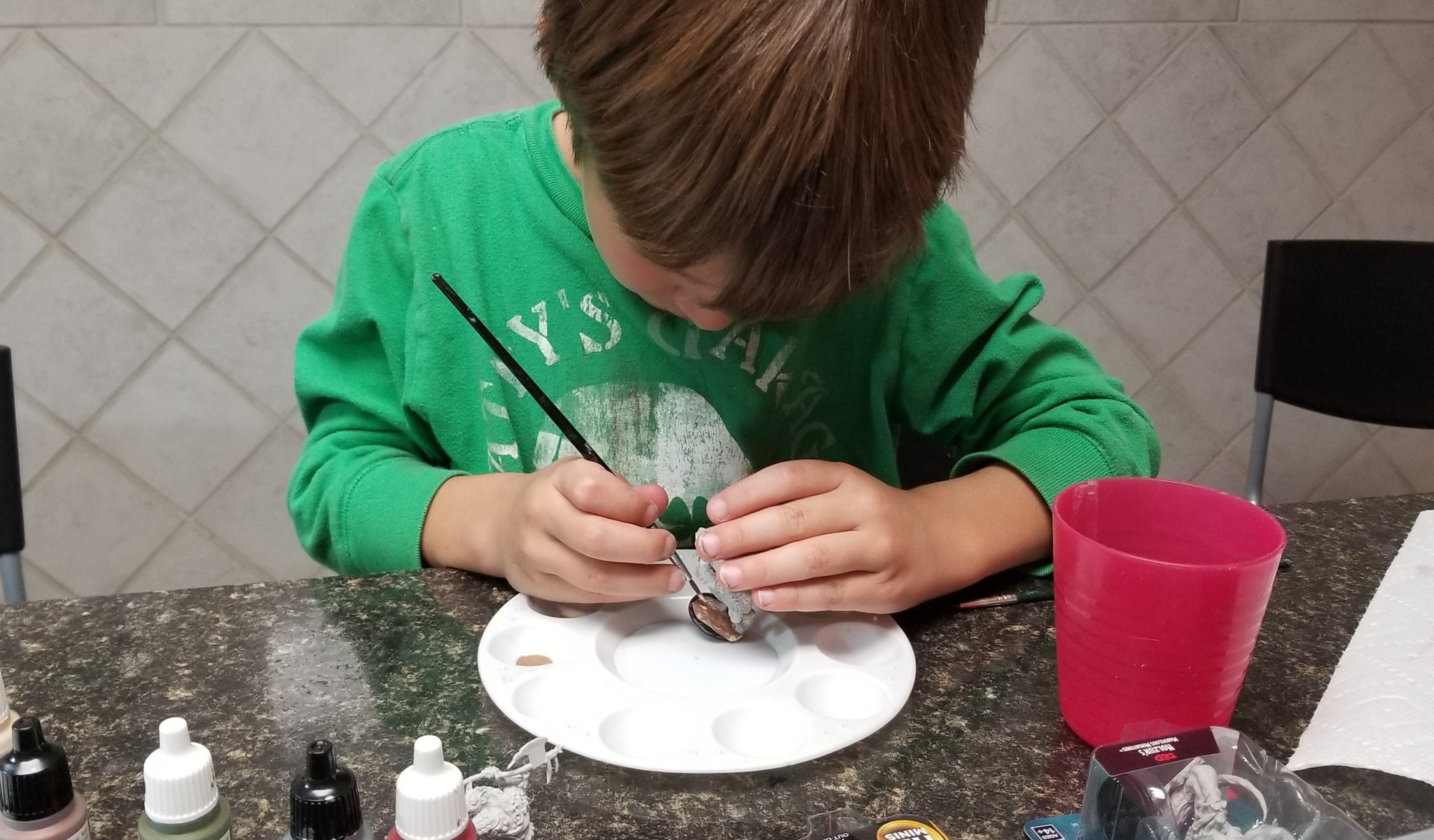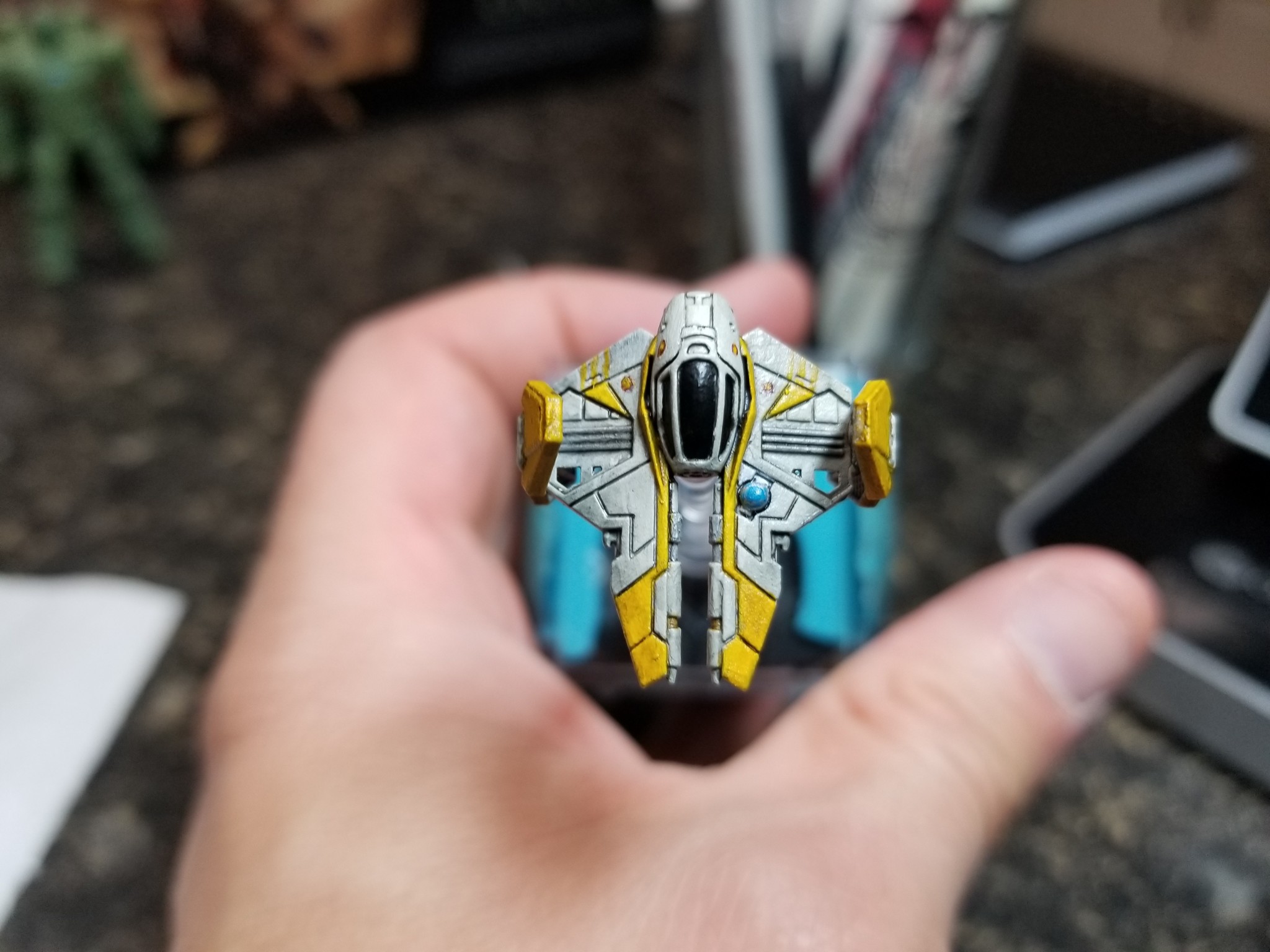Miniature Painting as a Family Made Fun and Easy!
- Posted on
- By Fair Game
- Posted in Child Creativity, mini painting, miniature painting, miniature wargaming, miniatures
- 0

There's nothing like quality time with the family ... and miniature painting could be your next big family activity!
Miniature painting can be a relaxing and rewarding hobby. Not only do you get to bling out your favorite tabletop games, but painting miniatures can be a ton of fun. Put on your favorite podcast, grab a brush, and express your creativity.
Regardless on how much experience painting you have, something to consider is bringing your kids into the hobby. Not only does miniature painting give them an outlet for expressiveness, but it has benefits of teaching color theory and improving their eye-hand coordination. Perhaps most importantly, painting will encourage your child to learn to be proud of their work and look to improve at something over time as they gain experience.

So where to start?
Chances are you don’t want to hand them your favorite Kominsky Sable brush and that promo mini you won in a Star Wars Legion tournament. Kids, especially ones new to painting, are going to be very messy and make lots of mistakes.
Honestly, the best place to start is to head to a local shop and grab a bag of plastic dinosaurs, cowboys, knights, etc. ... Whatever your child’s fascination might be. These can be big, chunky, and cost next to nothing. This will allow them to try out techniques, make mistakes, and not screw up their favorite copy of My Little Scythe.
Then grab a cheap pack of brushes (again, keep them away from your nice painting brushes) and some acrylic paint.
We recommend Army Painter brushes and paint; the quality of their brushes is very good for their cost, and the dropper bottles make it easy to get them the colors they want without over-pouring the paint out or knocking over a Citadel paint pot.

You'll want to prime the model before you paint.
The high-quality primer you can get at Fair Game has very fine pigment, which allows you to prime small models without filling in the details. If you aren't worried about losing detail on the toys you picked up for your kids, you could also go for a cheaper primer (Rustoleum 2x comes out fast and thick, but covers well).
Usually you pick primer color based on what you're painting - white primer for bright colors like red and yellow, black for earthy browns or metallics, and grey for anything in the middle.
If you're not sure, use white primer because it will change the paint color the least (like using crayons on white paper vs construction paper, the color ends up being closest to what the child expects to see).

Once it is time to start painting, sit at the same table and work together. If you want, you can each pick a toy from the same pack so it looks like you are all doing the same project. You will definitely want to offer them encouragement and tips as they go.
“Naked monsters”, like dinosaurs, are an excellent place to start because they are usually large and have very few areas of details. This will allow your child to paint with abandon and not worry about making very many mistakes. Being able to paint large areas of the model quickly will both keep their attention because they can see immediate progress and also give them a nice feeling of satisfaction because it can be completed in one sitting.
If you have an older child, or after your young one has gotten the feel for things, you can move on to painting actual miniatures from your board games or for roleplaying games. In fact, WizKids Dungeons & Dragons Nolzur’s Marvelous Unpainted Miniatures line not only has a large variety of options, but come pre-primed. Head down to Fair Game and let your child pick out a miniature that they love.
Another option would be to use a miniature from one of their favorite board games. Even if their paint job isn’t the best, most any paint job is better than dull grey plastic. Plus, knowing they painted the minis themselves might enhance their enjoyment of the game.

Lastly, teach your child to be proud of their finished work. It won't be as good as the professionally-painted miniatures shown on box art, which can lead to a feelings of discouragement or disappointment.
This is an important teaching moment because it teaches your kids that they should not expect perfection, but instead strive for progress. This model is their baseline - they will only get better because they now have experience. Compliment their model and show how proud you are by putting it on display for awhile. They will follow your lead and be proud of their work too, gaining confidence and becoming eager to paint again.
Miniature painting with your family is a great bonding experience and hopefully these tips will help you get started on that journey. It is an easy hobby to get into, and if you can enjoy it with a family member, it makes it so much better. On the plus side, when you have 80 miniatures for a game to paint, it goes twice as fast with a second set of hands!

Comments
Be the first to comment...